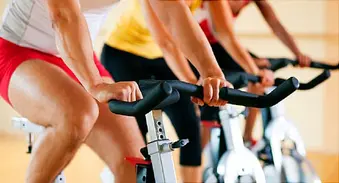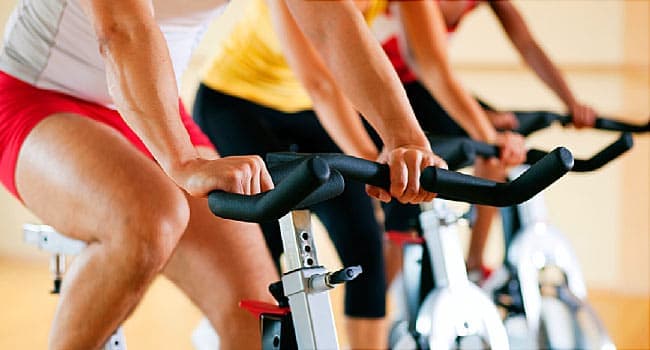Fitness Dos and Don'ts


"No pain, no gain."
- True
- False
Pain means you should stop what you’re doing and see a doctor before you start up again. Sore muscles are a different story. It's normal to feel a bit tender, especially when you're new to working out. So start slowly, but don’t let it keep you down. Some discomfort means you’re pushing your body to bring on change.
Which is the most balanced exercise plan?
- Walking, weight lifting, and yoga
- Running, weight lifting, and tennis
- Running, weight lifting, and cycling
This plan has three different types of exercise: aerobic activity or cardio (walking), strength or resistance training (weights), and flexibility training (yoga). And all of them are important. Walking and other cardio workouts like jogging, cycling, swimming, and tennis boost the power of your heart and lungs. Weight lifting builds muscle, keeps your bones strong, and helps with balance and coordination. Yoga can increase your range of motion and lower your chances of getting injured.
Do your cardio exercises before your strength training.
- True
- False
There's no "correct" order, but it can make a difference if you have a specific goal in mind. Do cardio first if you want to work on your endurance. Pump iron first if you want to build strength or bigger muscles.The most important thing is to get enough of both types of exercise every week.
What’s the toughest workout?
- Shopping
- Doing laundry
- Pushing a lawn mower
Bad news, shopaholics. Skimming the racks won’t speed up your breathing or heart rate. Neither does sorting your colors from your whites. Those activities don’t count as a workout. Pushing a lawnmower, though, can qualify as a moderate-intensity exercise if you do it for 10 minutes or longer.So what’s moderate intensity? It’s when you can talk but not sing the words of your favorite song. Vigorous intensity is when you’re breathing hard and fast and can’t get out more than a couple of words.
Thirty minutes of straight exercise is better than 10 minutes three times a day.
- True
- False
It’s fine to train throughout the day. Just stick to a minimum of 10 minutes at a time to get your heart rate up.The CDC recommends you get at least 150 minutes a week of moderate-intensity cardio exercise or 75 minutes at vigorous intensity.You can get the same fitness perks in half the time with vigorous exercises. Jog, swim laps, cycle fast, or play a sport that involves a lot of running, for example.
You should warm up every time you exercise and cool down afterward.
- True
- False
Don't skip these important steps. A warm-up of light aerobics to slightly raise your breathing and heart rate can prepare your muscles and help you avoid an injury. A brisk walk or a steady bike ride for 5 to10 minutes -- or until you break a sweat -- should do the trick.After your workout, cool down for the same amount of time to help your body recover. Simply continue your exercise session at a lower level of intensity. Include gentle stretching to loosen your muscles, tendons, and ligaments to cut soreness.
What target heart rate should you aim for during cardio?
- Twice your resting heart rate
- Three times your resting heart rate
- 50% to 85% of your maximum heart rate
Here’s where you’ll really help your ticker. If you've just started exercising, aim for the lower end of this range and work your way up.To find your maximum heart rate, subtract your age from 220.To take your pulse, place your fingers on your wrist or on the side of your neck, and count the number of beats in a minute.
Water is always better than sports drinks.
- True
- False
H2O is usually the best choice, especially during normal, daily exercise. But if you’re pushing hard for more than an hour, sports drinks can be just as good or better. They give you energy through carbohydrates and replace electrolytes lost through sweat. That helps you work out longer.
Everyone needs to check with their doctor before starting an exercise program.
- True
- False
Don’t let another excuse keep you from a healthy habit. Most people can go ahead and hit the gym. You should check with your doctor, though, if you:
- Are a man over 45 or a woman over 55, and you plan on doing vigorous workouts
- Have any medical problem such as diabetes or heart disease
- Have joint problems like arthritis
- Take blood pressure or heart meds
When you lift weights, you should feel the burn, and tire out your muscles.
- True
- False
Working your muscles to the point of tiredness is a good way to strengthen and tone them. Just be sure to use good form and control the motion. Each time you lift the weight, it's called a repetition, or "rep." Start with one set of 8 to 12 reps. Gradually increase the weight and the number of sets as you get stronger. You can use free weights, resistance bands, or gym machines.
You can target specific parts of your body to lose weight.
- True
- False
This idea is known as "spot reducing," and guess what? It's a myth! Your body sheds fat evenly across your body. So you can’t just do a million crunches to zap your "muffin top." You have to do a full-body workout to lose belly fat. Then you'll be able to show off your abs that all those sit-ups earned you.
Which “mind-body” exercise can improve your fitness?
- Yoga
- Pilates
- Tai chi
- All of the above
All three practices can boost your flexibility, strength, balance, and overall fitness. Yoga has challenging poses that get your heart rate going. Pilates involves tough strength training. And tai chi lowers your blood pressure.Think about adding these exercises to balance your workout.
It’s better to work out in the morning than in the afternoon or evening.
- True
- False
What’s the best time to exercise? Whenever you can make it a part of your routine. Research shows that your body will adjust to whatever time of day works for you. Some studies say physical performance peaks in the late afternoon. Others say that morning workouts help you sleep better. The most important thing is to pick a time of day you can stick with.
